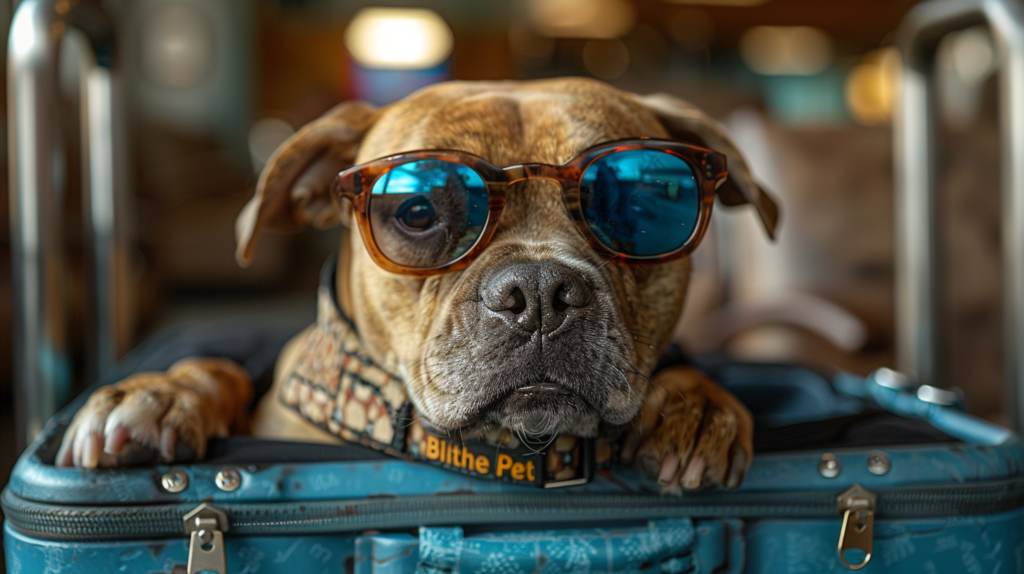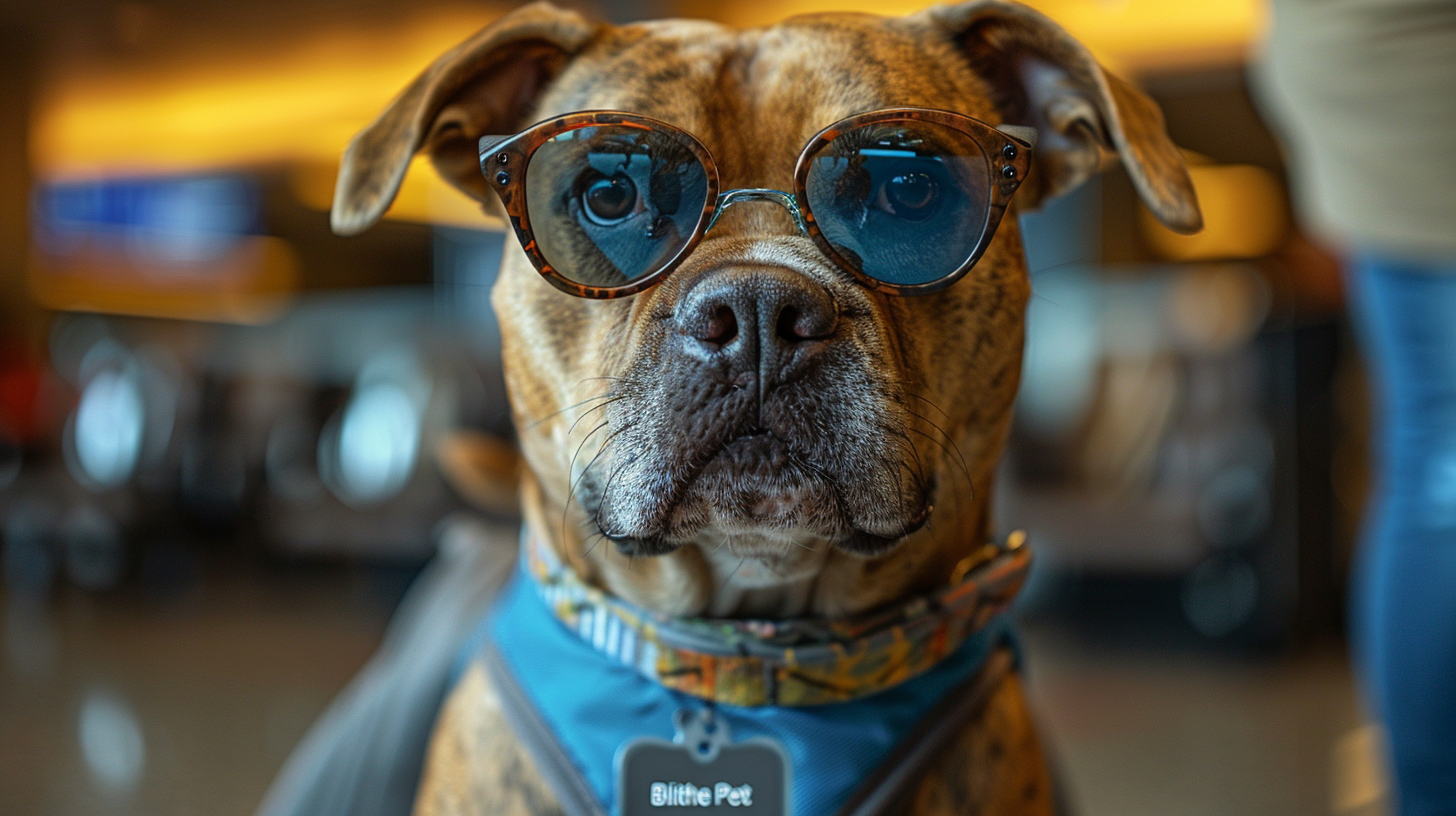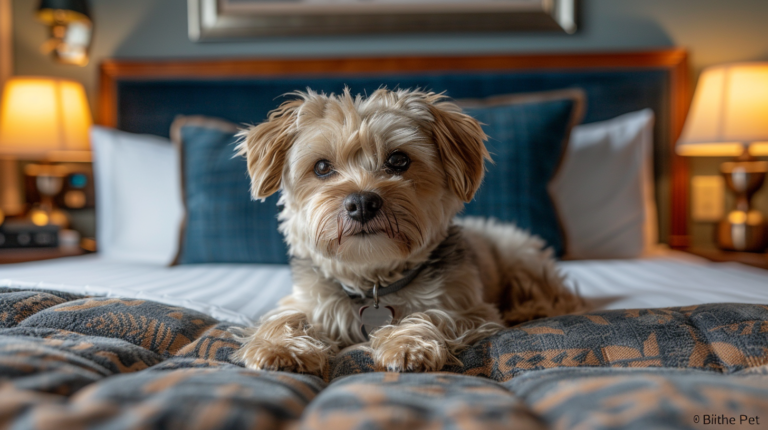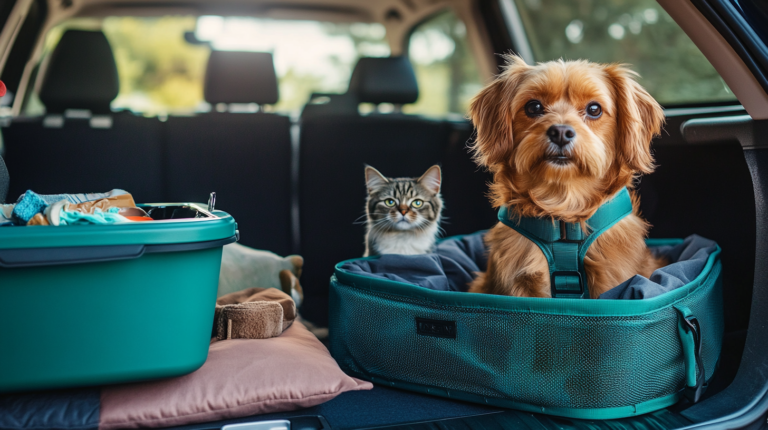Discover hidden Southwest pet fee truths that could save you hundreds. Essential guide to airline pet policies, costs, and expert travel tips for pet owners.
Table of Contents
Did you know that over 2 million pets fly annually on U.S. airlines, with Southwest Airlines being one of the most pet-friendly carriers? If you’re planning to travel with your furry companion, understanding the Southwest pet fee structure could save you from unexpected surprises at the airport. While Southwest’s $95 pet fee might seem straightforward, there are shocking truths about their pet travel policies that most pet owners discover too late.
When I first attempted to fly with my rescue dog Luna from Dallas to Denver three years ago, I thought I had everything figured out. The Southwest pet fee seemed reasonable compared to other airlines, but what I didn’t expect were the hidden restrictions and last-minute policy changes that nearly derailed our vacation plans. That experience taught me that successful pet travel requires more than just paying the fee—it demands thorough preparation and insider knowledge.

This comprehensive guide reveals five critical truths about Southwest pet fees that every pet owner must know before booking their next flight. From understanding the real costs involved to navigating breed restrictions and seasonal limitations, you’ll discover everything needed to ensure a smooth journey for both you and your beloved pet.
| Southwest Pet Fee Breakdown | In-Cabin Pet | Service Animal | Emotional Support Animal |
|---|---|---|---|
| Base Fee | $95 each way | Free | No longer accepted |
| Carrier Requirements | Hard or soft-sided | N/A | N/A |
| Weight Limit | Pet + carrier ≤ 20 lbs | No limit | N/A |
| Age Requirement | 8 weeks minimum | No age limit | N/A |
| Health Certificate | Required within 10 days | Not required | N/A |
| Advance Booking | Required | Recommended 48hrs | N/A |
Truth #1: The Southwest Pet Fee Is Just the Beginning of Your Expenses
The Southwest pet fee of $95 each way represents only a fraction of your total pet travel costs. While this fee covers your pet’s spot in the cabin, savvy pet owners budget an additional $200-400 for essential travel preparations that Southwest doesn’t advertise.
Hidden Costs You Must Consider:
Veterinary Health Certificate ($50-150): Southwest requires a health certificate issued within 10 days of travel. This isn’t a simple checkup—your veterinarian must complete specific USDA forms and provide detailed health assessments.
Approved Pet Carrier ($40-200): Not all carriers meet Southwest’s strict dimensional requirements. The carrier must fit completely under the seat (18.5″ L x 8.5″ H x 13.5″ W), and cheap alternatives often fail airport inspections.
Pre-Travel Vet Visit ($80-200): Beyond the health certificate, responsible pet owners schedule wellness checks to ensure their pets can handle air travel stress, especially for senior animals or those with pre-existing conditions.
Travel Insurance for Pets ($25-75): While optional, pet travel insurance covers emergency veterinary care during trips, which can cost thousands in unfamiliar cities.
Airport Parking and Ground Transportation ($30-100): Many pet-friendly transportation options charge premium rates, and airport parking fees accumulate quickly during extended trips.
Real-World Cost Breakdown:
A recent survey of 500 Southwest pet travelers revealed the average total cost breakdown:
- Southwest pet fee: $190 (round trip)
- Veterinary requirements: $125
- Approved carrier: $85
- Miscellaneous travel prep: $65
- Total Average Cost: $465
Truth #2: Breed Restrictions and Size Limitations Are More Complex Than Advertised
Southwest’s “pet-friendly” reputation masks significant restrictions that can ground your travel plans. The airline’s breed and size policies contain nuances that even experienced pet travelers overlook.
The 20-Pound Reality Check
The Southwest pet fee covers pets whose combined weight with their carrier doesn’t exceed 20 pounds. However, this seemingly generous limit becomes restrictive when you consider:
Carrier Weight Impact: Quality airline-approved carriers weigh 3-6 pounds, leaving only 14-17 pounds for your actual pet. This eliminates most medium and large dog breeds, despite Southwest’s marketing suggesting broader acceptance.
Breed-Specific Challenges: While Southwest doesn’t maintain an official banned breed list like other airlines, certain breeds face practical restrictions:
- Brachycephalic (flat-faced) breeds: Bulldogs, pugs, and Persian cats struggle with cabin pressure changes and may be denied boarding for health reasons
- Anxiety-prone breeds: Border collies and other high-energy breeds may require sedation, which Southwest prohibits
- Large-frame small dogs: Breeds like French bulldogs often exceed weight limits despite being “small” dogs
Seasonal and Route-Specific Restrictions
Southwest implements temperature-based restrictions that vary by season and destination:
Summer Embargos (June-September): Routes to Phoenix, Las Vegas, and other desert cities face additional restrictions when ground temperatures exceed 85°F.
Winter Considerations: Northern routes during winter months may require additional health certifications for pets traveling to extremely cold climates.
International Connections: While Southwest doesn’t fly internationally, pets connecting to international flights face additional USDA requirements that affect domestic travel preparation.
| Pet Travel Checklist by Timeline | 30 Days Before | 10 Days Before | Day of Travel |
|---|---|---|---|
| Health & Documentation | Schedule vet visit | Obtain health certificate | Bring all documents |
| Carrier Preparation | Purchase approved carrier | Practice carrier training | Final carrier check |
| Booking & Reservations | Add pet to reservation | Confirm pet space availability | Check-in online |
| Travel Prep | Research destination pet policies | Pack travel essentials | Arrive 2 hours early |
| Emergency Planning | Locate destination vets | Purchase travel insurance | Keep emergency contacts ready |
Truth #3: Booking Limitations Can Ground Your Pet Travel Plans
The Southwest pet fee becomes meaningless if you can’t secure a spot for your pet. Southwest limits pet passengers to six per flight, and popular routes often sell out weeks in advance during peak travel seasons.
The Six-Pet-Per-Flight Bottleneck
Southwest’s aircraft configuration allows only six pets in the cabin across all seating areas. This limitation creates intense competition for pet spots, especially on:
High-Demand Routes:
- California to anywhere (Los Angeles, San Francisco, San Diego)
- Florida destinations during winter months
- Popular vacation spots like Hawaii, Colorado ski areas
- Business corridors (Chicago-New York, Dallas-Houston)
Peak Travel Periods:
- Thanksgiving week: Pet spots book 8-12 weeks early
- Christmas/New Year: 6-10 weeks advance booking required
- Summer vacation months: 4-8 weeks for weekend flights
- Spring break periods: 3-6 weeks for college town routes
Strategic Booking Recommendations
Book Pet Space Before Purchasing Human Tickets: Unlike other airlines, Southwest requires you to call and confirm pet availability before completing your reservation. Many travelers book human tickets first, only to discover no pet spots remain.
Consider Alternative Departure Times: Early morning and late evening flights typically have better pet availability as business travelers rarely bring pets.
Be Flexible with Dates: A difference of one day can mean the difference between available pet space and a completely booked flight.
Monitor Cancellations: Southwest doesn’t maintain pet waitlists, but calling 24-48 hours before departure sometimes reveals last-minute cancellations.
For more expert pet care tips and product recommendations, visit BlithePet.com — your trusted source for pet wellness.
Truth #4: Health Certificate Requirements Are More Stringent Than You Think
The Southwest pet fee includes the expectation that your pet meets all health requirements, but the reality of obtaining proper documentation involves navigating complex veterinary and regulatory requirements that catch many pet owners off-guard.
The 10-Day Window Challenge
Southwest requires a health certificate issued within 10 days of travel, but this timeline creates several practical challenges:
Veterinary Scheduling Conflicts: Many veterinarians book 2-3 weeks out, making it difficult to secure appointments within the required window during busy seasons.
USDA Form Complexity: The required health certificate isn’t a simple checkup note. Veterinarians must complete specific USDA forms that document:
- Current vaccination status with exact dates
- Parasite examination results
- Physical fitness assessment for air travel
- Breed identification verification
- Microchip or tattoo identification confirmation
Interstate Travel Complications: Crossing state lines may require additional certifications, especially for states with strict animal import regulations like Hawaii, California, and Florida.
Vaccination Requirements Beyond the Basics
While the Southwest pet fee covers cabin transport, your pet must meet vaccination standards that exceed standard pet care:
Required Vaccinations:
- Rabies (must be current and at least 30 days old)
- DHPP for dogs (Distemper, Hepatitis, Parvovirus, Parainfluenza)
- FVRCP for cats (Feline Viral Rhinotracheitis, Calicivirus, Panleukopenia)
Recommended Additional Vaccines:
- Bordetella (kennel cough) – particularly important for cabin travel
- Lyme disease vaccine for travel to endemic areas
- Feline leukemia vaccine for cats
Timing Considerations: New vaccinations require 2-4 weeks to become effective, so last-minute travel plans may be impossible for pets with lapsed vaccination schedules.
Age and Breed-Specific Health Concerns
Puppy and Kitten Restrictions: Pets under 8 weeks cannot travel, and young animals (8-16 weeks) face additional health scrutiny due to incomplete vaccination series.
Senior Pet Considerations: Animals over 8 years require more comprehensive health evaluations, including cardiac and respiratory assessments to ensure they can handle cabin pressure changes.
Brachycephalic Breed Challenges: Flat-faced breeds require specialized health certificates documenting respiratory function, as these breeds face higher risks during air travel.
Truth #5: The Real Southwest Pet Fee Includes Hidden Time and Stress Costs
Beyond monetary expenses, the Southwest pet fee represents a significant investment in time, preparation, and emotional energy that many pet owners underestimate.
Time Investment Breakdown
Initial Research and Planning (8-12 hours):
- Understanding Southwest’s pet policies
- Researching destination pet requirements
- Comparing carrier options and reading reviews
- Scheduling veterinary appointments
Preparation and Training (15-25 hours):
- Carrier acclimation training (2-3 weeks of daily practice)
- Health certificate veterinary visits
- Practice runs to reduce travel anxiety
- Packing and preparation time
Travel Day Logistics (4-6 extra hours):
- Arriving 2 hours early for pet processing
- Security screening complications
- Potential delays due to pet-related issues
- Post-flight adjustment time
Stress Factors Often Overlooked
Pet Anxiety Management: Many pets experience significant stress during air travel. Signs include excessive panting, drooling, trembling, or attempts to escape the carrier. This stress can persist for days after travel.
Owner Anxiety: Pet owners report higher stress levels when traveling with pets, worrying about their companion’s comfort and safety throughout the journey.
Contingency Planning: Successful pet travel requires backup plans for various scenarios:
- Flight cancellations or delays
- Pet health emergencies during travel
- Carrier malfunction or damage
- Destination accommodation issues
Success Strategies from Experienced Pet Travelers
Start Preparation Early: Begin carrier training and health preparations 4-6 weeks before travel, not days.
Pack Smart: Essential items include:
- Portable water and food dishes
- Familiar blanket or toy for comfort
- Waste bags and cleaning supplies
- Emergency contact information for destination veterinarians
- Copies of all health documents
Consider Pet-Sitting Alternatives: For trips under one week, many pets experience less stress staying home with professional pet sitters rather than traveling.
| Southwest vs. Competitors Pet Fees | Southwest | American | Delta | United |
|---|---|---|---|---|
| In-Cabin Fee (each way) | $95 | $125 | $125 | $125 |
| Pet Limit per Flight | 6 pets | 7 pets | 4 pets | 4 pets |
| Carrier Size Limits | 18.5″×8.5″×13.5″ | 19″×13″×9″ | 18″×11″×11″ | 17.5″×12″×7.5″ |
| Weight Limit | 20 lbs total | 20 lbs total | 20 lbs total | 20 lbs total |
| Health Certificate | Within 10 days | Within 10 days | Within 10 days | Within 30 days |
| Advance Booking | Required | Required | Required | Recommended |
| Breed Restrictions | None listed | Snub-nosed breeds | Snub-nosed breeds | Extensive list |
Expert Tips for Maximizing Your Southwest Pet Travel Experience
Successfully navigating Southwest pet fees requires insider knowledge that goes beyond basic policy understanding. These expert tips come from veterinarians, professional pet transporters, and experienced pet travelers who’ve learned through trial and error.
Booking Strategy Optimization
Use Southwest’s Flexible Booking to Your Advantage: Book multiple potential flights during peak seasons, then cancel unused reservations up to 10 minutes before departure without penalty. This strategy ensures pet space availability while maintaining schedule flexibility.
Monitor Southwest’s Route Changes: The airline frequently adjusts seasonal routes. Sign up for route alerts to catch new direct flights that might offer better pet availability than connecting alternatives.
Consider Companion Pass Benefits: Southwest’s Companion Pass allows a designated person to fly free, but pets still require paid reservations. However, Companion Pass holders often get priority customer service, which can help resolve pet travel issues more quickly.
Health Certificate Optimization
Build Relationships with USDA-Accredited Veterinarians: Not all veterinarians are accredited to issue interstate health certificates. Establish relationships with accredited vets near your home and destination cities to avoid last-minute complications.
Request Digital Copies: Ask your veterinarian for digital copies of all health documents. Southwest accepts electronic versions, and digital backups prevent disaster if physical documents are lost during travel.
Understand State-Specific Requirements: Research destination state requirements independently. Some states have additional entry requirements beyond Southwest’s basic health certificate mandate.
Carrier Selection and Training Secrets
Invest in Premium Carriers: Cheap carriers frequently fail airport inspections. Professional-grade carriers like Sherpa or SturdiBag cost more initially but prevent expensive trip cancellations due to equipment failure.
Practice Security Screening: Train your pet to remain calm when removed from carriers during TSA screening. This process terrifies unprepared pets and can cause significant delays.
Pack Carrier Strategically: Include familiar items like favorite blankets or toys, but avoid squeaky toys or items that might disturb other passengers during flight.
Common Mistakes That Cost Pet Owners Hundreds
Even experienced travelers make costly errors when dealing with Southwest pet fees. Learning from others’ mistakes can save you significant money and stress.
Timing and Documentation Errors
The 10-Day Health Certificate Trap: Many pet owners schedule veterinary appointments exactly 10 days before travel, not realizing that document processing time can push them beyond the valid window. Schedule appointments 7-8 days before departure to allow processing buffer time.
Vaccination Timing Oversights: New pet owners often discover their young pets need additional vaccination rounds that won’t be complete before planned travel dates. Puppies typically need 3-4 vaccination rounds spaced 3-4 weeks apart, meaning travel plans made too early in a pet’s life become impossible.
Interstate Documentation Confusion: Flying from Texas to California requires different documentation than Texas to New Mexico. Research destination state requirements independently, as Southwest’s basic requirements may not cover all interstate travel needs.
Booking and Reservation Pitfalls
The “Add Pet Later” Mistake: Unlike human passengers, pets cannot be added to existing reservations online. Many travelers book human flights first, assuming they can add pets later, only to discover no pet spaces remain on their preferred flights.
Carrier Size Miscalculations: Pet owners frequently measure their pets but forget to account for carrier dimensions and required comfort space. A 15-pound dog needs a carrier that provides standing and turning room, which often exceeds Southwest’s size restrictions.
Connection Flight Oversights: Southwest’s domestic routes occasionally require connections for certain city pairs. Each connection segment requires separate pet fees and creates additional stress for traveling animals.
Day-of-Travel Disasters
Inadequate Airport Arrival Time: While Southwest recommends arriving 2 hours early with pets, experienced travelers suggest 2.5-3 hours during peak periods. Pet processing takes significantly longer than standard passenger processing.
Sedation Mistakes: Some pet owners give their animals sedatives to reduce travel anxiety, not knowing that Southwest (and all major airlines) prohibit sedated pets due to safety concerns. Sedated pets can experience dangerous reactions to cabin pressure changes.
Emergency Contact Oversights: Failing to research emergency veterinary services at destination cities can turn minor pet health issues into major crises. Always identify 24-hour veterinary clinics near your destination before traveling.
When to Consult a Professional: Veterinary Guidance for Pet Travel
The Southwest pet fee investment becomes worthless if your pet isn’t physically or emotionally prepared for air travel. Understanding when professional veterinary consultation is essential versus optional can prevent dangerous situations and costly trip cancellations.
Mandatory Veterinary Consultation Scenarios
Senior Pets (8+ years): Older animals require comprehensive pre-travel health assessments including cardiac and respiratory evaluations. Age-related conditions like arthritis, heart murmurs, or kidney disease can make air travel dangerous or impossible.
Brachycephalic (Flat-Faced) Breeds: Bulldogs, pugs, Persian cats, and similar breeds face higher risks during air travel due to respiratory anatomy. These pets require specialized health clearances and may need additional monitoring during travel.
Pets with Chronic Conditions: Animals with diabetes, epilepsy, heart conditions, or other chronic illnesses need customized travel plans developed with veterinary guidance. Medication timing, stress management, and emergency protocols require professional input.
Recently Adopted Pets: Rescue animals or newly adopted pets may have unknown health histories or travel anxieties that require professional assessment before attempting air travel.
Behavioral Consultation Benefits
Severe Travel Anxiety: Pets with extreme travel phobias benefit from behavioral consultation and gradual desensitization training. This process typically requires 4-8 weeks and significantly improves travel success rates.
Aggressive or Unpredictable Behavior: Animals with bite histories or unpredictable behavior patterns need professional behavioral assessment before air travel approval.
First-Time Travelers: Even healthy pets benefit from pre-travel consultations to discuss anxiety management, carrier training, and travel day preparation strategies.
Emergency Preparedness Planning
Destination Veterinary Research: Professional consultation should include identifying emergency veterinary services at your destination. Your regular veterinarian can often provide referrals to trusted colleagues in other cities.
Travel Medical Kit Assembly: Veterinarians can recommend appropriate travel medical supplies specific to your pet’s needs, including motion sickness medications, anti-anxiety aids, and emergency contact protocols.
Health Record Preparation: Beyond required health certificates, veterinarians can prepare comprehensive health summaries that prove invaluable if emergency veterinary care becomes necessary during travel.
Myth-Busting: Separating Southwest Pet Fee Facts from Fiction
Misinformation about airline pet policies spreads rapidly among pet owner communities. These persistent myths can lead to poor decisions and expensive mistakes when planning Southwest pet travel.
Myth #1: “Southwest’s Pet Fee Includes Food and Water Service”
Reality: The $95 Southwest pet fee covers only cabin space reservation. Airlines are prohibited from providing food or water to pets during flight due to safety regulations. Pet owners must provide their own water and are responsible for all pet care during travel.
Truth: Flight attendants cannot assist with pet care, open carriers, or provide pet-related services during flight. Pet owners are completely responsible for their animals’ needs throughout the journey.
Myth #2: “Emotional Support Animals Fly Free on Southwest”
Reality: As of December 2020, Southwest no longer recognizes emotional support animals (ESAs) as service animals. Only trained service dogs fly free, and they must meet strict certification requirements.
Truth: Former ESAs must now pay the standard Southwest pet fee and meet all in-cabin pet requirements, including carrier restrictions and weight limits. The only exception is legitimate service dogs trained to perform specific tasks for individuals with disabilities.
Myth #3: “Pet Carriers Can Be Stored in Overhead Bins During Takeoff”
Reality: Pet carriers must remain under the seat in front of you for the entire flight, including takeoff, landing, and taxi periods. Overhead bin storage is never permitted for live animals.
Truth: This restriction significantly limits carry-on space for pet owners, as the under-seat area becomes occupied by the pet carrier. Plan to pack essential items in personal items that fit under your own seat.
Myth #4: “Southwest Allows Pets in All Seat Types”
Reality: Southwest restricts pets from certain seating areas, including exit rows and first rows of each section. Additionally, only specific seat configurations accommodate pet carriers due to under-seat space variations.
Truth: When booking with pets, Southwest automatically assigns compatible seats, but this may limit your preferred seating options. Business Select passengers with pets may not get their preferred front-of-plane seats.
Step-by-Step Guide: Booking Southwest Pet Travel Successfully
This comprehensive walkthrough ensures you complete every required step for successful Southwest pet travel without costly mistakes or delays.
Phase 1: Pre-Booking Preparation (4-6 Weeks Before Travel)
Step 1: Verify Pet Eligibility
- Confirm your pet weighs under 20 pounds including carrier
- Ensure your pet is at least 8 weeks old
- Check for breed-specific considerations (brachycephalic breeds need extra preparation)
Step 2: Research Route Requirements
- Verify Southwest serves your desired route directly (connections complicate pet travel)
- Check seasonal restrictions for summer/winter destinations
- Identify alternative travel dates if primary choices show limited pet availability
Step 3: Carrier Selection and Purchase
- Measure your pet carefully (length, width, height while standing)
- Purchase Southwest-approved carrier with proper ventilation
- Begin carrier acclimation training immediately
Phase 2: Health Documentation (2-3 Weeks Before Travel)
Step 4: Schedule Veterinary Appointment
- Book appointments 2-3 weeks in advance with USDA-accredited veterinarians
- Request health certificate appointments for 7-8 days before travel (not 10 days)
- Schedule separate vaccination updates if needed
Step 5: Complete Required Vaccinations
- Ensure rabies vaccination is current and at least 30-days old
- Update DHPP (dogs) or FVRCP (cats) if necessary
- Consider additional vaccines like Bordetella for cabin travel
Step 6: Obtain Health Certificate
- Provide complete vaccination records to veterinarian
- Ensure health certificate includes all required elements (weight, identification, vaccination status)
- Request both physical and digital copies
Phase 3: Reservation and Booking (1-2 Weeks Before Travel)
Step 7: Call Southwest Reservations
- Phone 1-800-I-FLY-SWA to add pets to existing reservations
- Confirm pet space availability before completing booking
- Request seat assignments compatible with pet carriers
Step 8: Complete Documentation Review
- Double-check health certificate expiration dates
- Prepare backup copies of all required documents
- Research destination state entry requirements
Step 9: Final Travel Preparations
- Pack pet travel essentials (portable dishes, waste bags, comfort items)
- Plan airport arrival 2.5-3 hours before departure
- Identify emergency veterinary services at destination
Phase 4: Travel Day Execution
Step 10: Pre-Departure Checklist
- Feed pets 4-6 hours before flight (not immediately before)
- Allow final bathroom break before departing for airport
- Verify all documents are easily accessible
Step 11: Airport Processing
- Arrive early for pet check-in procedures
- Be prepared to remove pets from carriers during security screening
- Keep health certificates readily available for multiple inspections
Step 12: In-Flight Management
- Keep carriers under seat at all times
- Monitor pet comfort without opening carrier door
- Prepare for potential delays affecting pet bathroom needs
Frequently Asked Questions About Southwest Pet Fees
Actually, the Southwest pet fee covers your pet’s reservation in the aircraft cabin and nothing more. This fee doesn’t include food, water, or any special services. You’re responsible for bringing your own pet supplies, including water, food, waste bags, and comfort items for the journey.
Always call Southwest directly at 1-800-I-FLY-SWA to add pets to your reservation. Pet space cannot be booked online and is limited to 6 pets per flight. Many travelers make the costly mistake of booking human tickets first, only to discover no pet spaces remain on their preferred flights.
Arrive at least 2.5 to 3 hours before departure when traveling with pets, especially during peak travel periods. Pet processing takes significantly longer than standard passenger check-in, including additional document verification, carrier inspections, and TSA security procedures that require removing your pet from the carrier.
Airlines strictly enforce the 10-day health certificate requirement. If your certificate expires during travel, you may be denied boarding on return flights. Always schedule veterinary appointments 7-8 days before departure to allow processing time, and consider trip duration when planning health certificate timing.
Although Southwest doesn’t maintain an official banned breed list, brachycephalic (flat-faced) breeds like bulldogs and pugs face practical restrictions due to breathing difficulties during flight. These breeds require specialized health certificates and may be denied boarding if showing respiratory distress at the gate.
Absolutely not. Southwest and all major airlines prohibit sedated pets due to safety concerns. Sedated animals can experience dangerous reactions to cabin pressure changes and altitude variations. Instead, focus on carrier training, natural calming aids, and behavioral preparation techniques recommended by your veterinarian.
Red Flags: When Southwest Pet Travel Isn’t the Right Choice
Despite Southwest’s reputation as a pet-friendly airline, certain situations make alternative transportation methods safer and more appropriate for your pet’s well-being.
Health-Related Red Flags
Respiratory Issues: Pets with any history of breathing difficulties, including seasonal allergies that cause respiratory symptoms, should avoid air travel during symptom periods. Cabin pressure changes can exacerbate breathing problems.
Recent Surgery or Illness: Animals recovering from surgery, illness, or injury require ground-level transport. The stress of air travel can compromise healing and lead to serious complications.
Extreme Age Considerations: Very young pets (under 12 weeks) and elderly pets (over 12 years) face higher risks during air travel. Consult veterinarians about alternative transportation methods for these vulnerable age groups.
Pregnancy: Pregnant pets should avoid air travel, particularly during late pregnancy stages. The stress and pressure changes can trigger premature labor or complications.
Behavioral Warning Signs
Severe Separation Anxiety: Pets that become destructive or self-harmful when separated from owners may injure themselves trying to escape carriers during flight.
Aggression Toward Strangers: Animals that bite or show aggression toward unfamiliar people pose safety risks during TSA screening and boarding procedures.
Extreme Fear of Confined Spaces: Pets with severe claustrophobia may panic in carriers, potentially causing injury to themselves or distressing other passengers.
Practical Considerations
Extended Travel Duration: Flights longer than 5-6 hours become challenging for pets’ bathroom needs and comfort. Consider whether your pet can reasonably stay in a carrier for the full journey duration.
Multiple Connections: Connecting flights create additional stress and opportunities for problems. Direct routes are always preferable for pet travel.
Extreme Weather Conditions: Temperature extremes at departure or destination airports can make pet travel dangerous. Summer desert destinations and winter northern cities require careful timing considerations.
Alternative Solutions When Southwest Pet Fees Don’t Make Sense
Sometimes the total cost and stress of airline pet travel exceed the benefits, especially for certain trip types or pet personalities. Consider these alternatives before committing to the Southwest pet fee investment.
Professional Pet Transportation Services
Ground Transport Specialists: Companies like Pet Transport Inc. and Happy Tails Travel provide door-to-door ground transportation for pets. While more expensive than airline travel ($800-2000+ depending on distance), these services offer personalized care and eliminate airline restrictions.
Benefits:
- No weight restrictions
- Customized travel schedules
- Professional pet handlers
- Climate-controlled vehicles
- Regular stops for bathroom breaks and exercise
Considerations:
- Higher costs for long distances
- Longer travel times
- Limited availability in rural areas
- Requires advance booking (2-4 weeks)
Professional Pet Sitting Services
In-Home Pet Sitting: Services like Rover, Wag, and local pet sitters provide in-home care while you travel. Costs range from $25-75 per day depending on location and services required.
Benefits:
- Pets remain in familiar environment
- Customized care routines
- Often less expensive than airline travel for trips under one week
- No travel stress for pets
- House security benefits
Boarding Facilities: High-quality boarding facilities offer supervised care, socialization, and sometimes training services during your absence.
Driving Alternatives
Pet-Friendly Road Trips: For distances under 1000 miles, driving often provides better experiences for both pets and owners, with total costs comparable to airline travel when factoring in all Southwest pet fees and associated expenses.
RV Rentals: Recreational vehicle rentals accommodate pets comfortably and provide flexibility for longer trips, especially when visiting multiple destinations.
Have a similar experience with your pet? Share it in the comments below! Don’t forget to check out our other helpful guides at BlithePet.com.
Conclusion
Understanding the true scope of Southwest pet fees extends far beyond the basic $95 charge. From hidden costs and complex health requirements to booking limitations and breed considerations, successful pet travel requires comprehensive preparation and realistic expectations.
The five shocking truths revealed in this guide—the additional expenses, restrictive limitations, booking challenges, health certificate complexities, and hidden time costs—demonstrate that the advertised Southwest pet fee represents only the tip of the iceberg. Smart pet owners budget $400-600 total for pet travel and begin preparations 4-6 weeks before departure.
While Southwest remains one of the most pet-friendly major airlines, with lower fees than competitors and relatively flexible policies, the decision to fly with your pet should be based on your animal’s individual needs, health status, and temperament. Sometimes the most loving choice is leaving your pet in familiar surroundings with professional care rather than subjecting them to travel stress.
For pet owners who decide airline travel is appropriate, thorough preparation, professional veterinary guidance, and realistic expectations ensure the best possible experience for both human and animal travelers. Remember that successful pet travel is measured not just in dollars saved, but in the safety, comfort, and well-being of your beloved companion throughout the journey.







